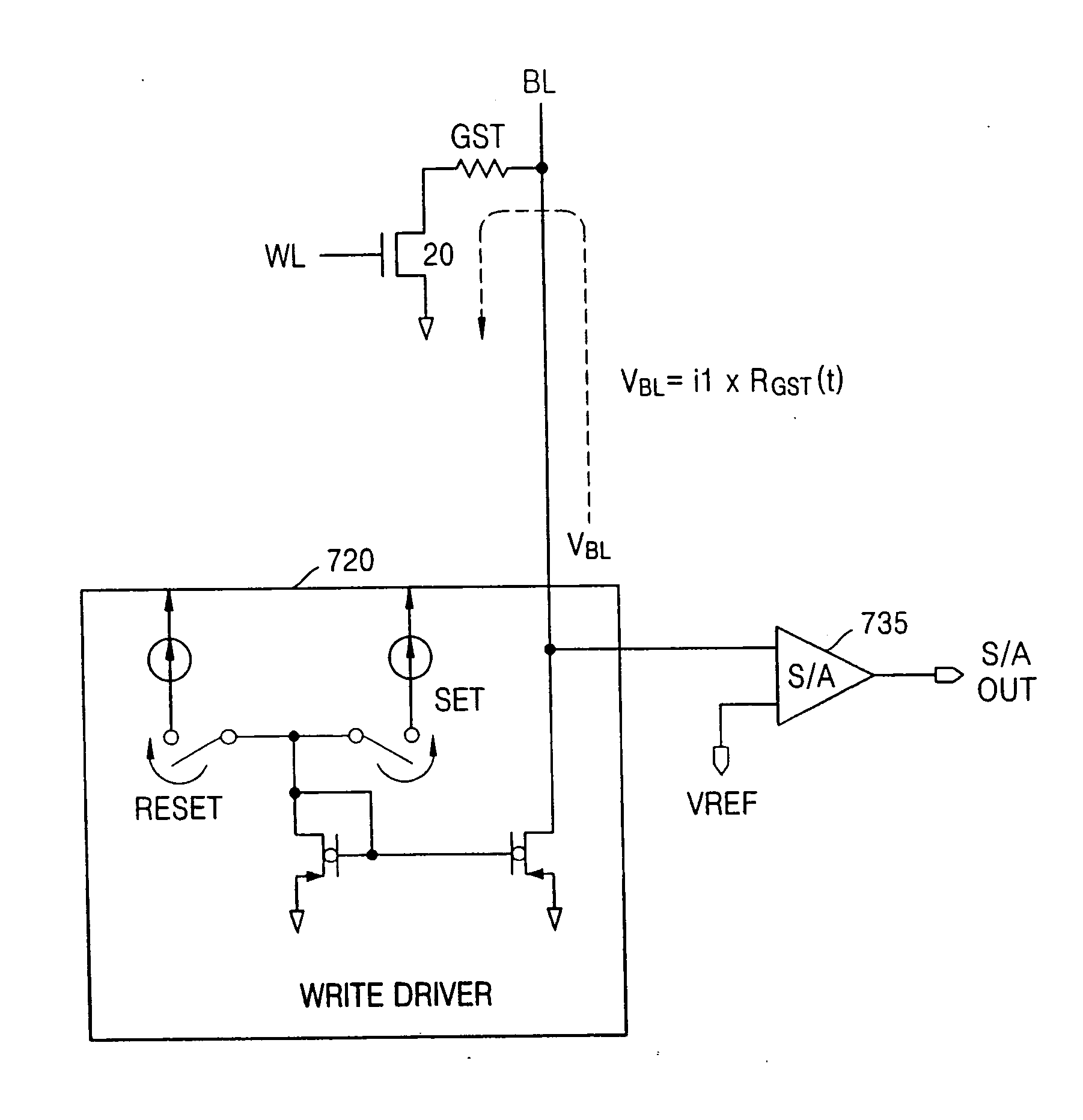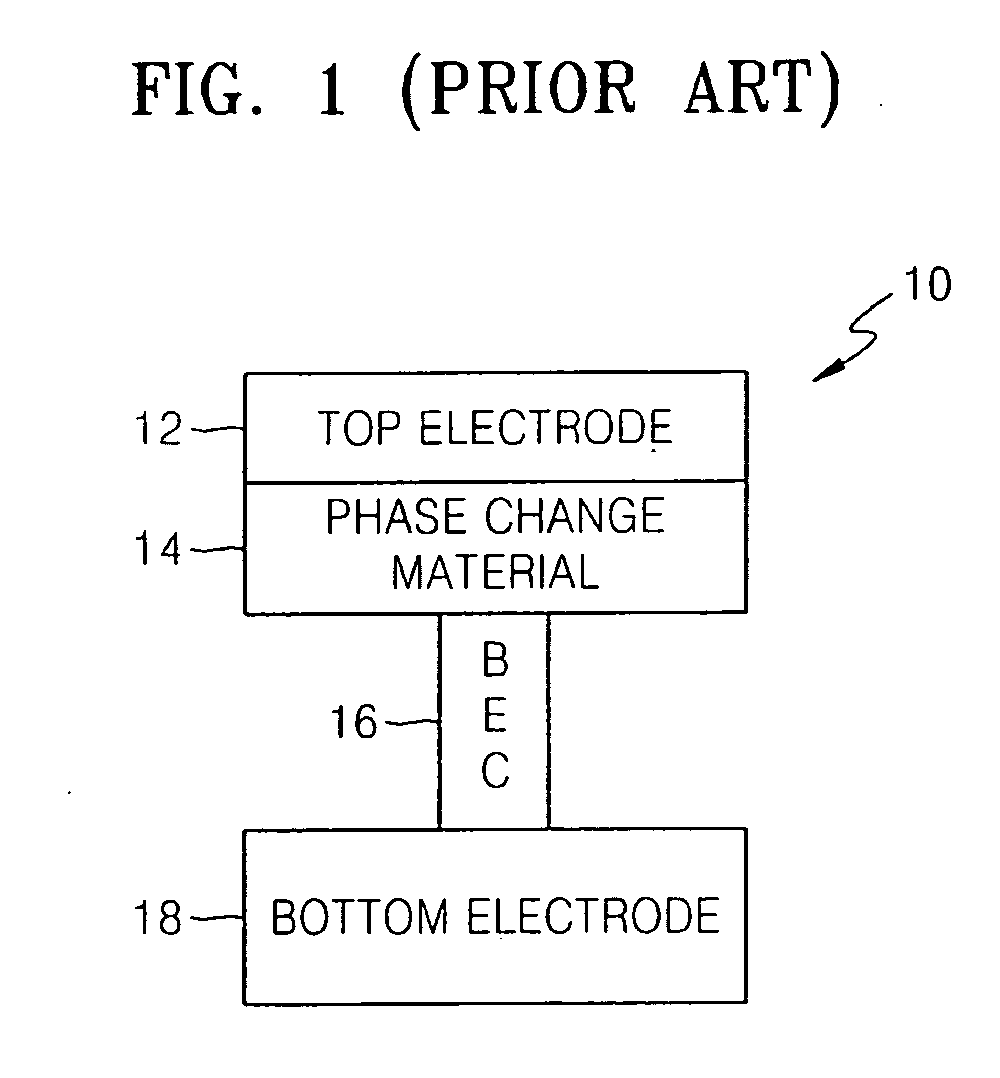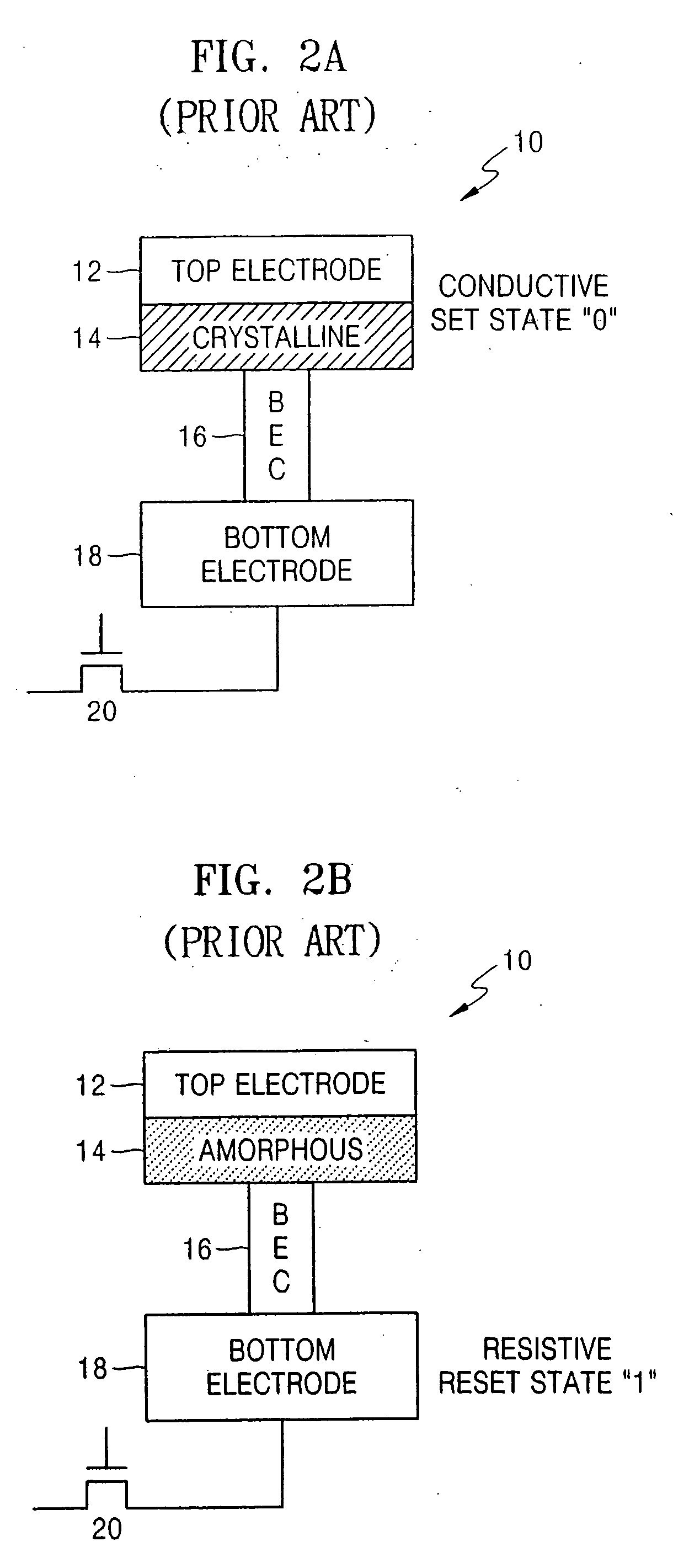Device and method for pulse width control in a phase change memory device
a phase change memory and device technology, applied in semiconductor devices, digital storage, instruments, etc., can solve the problems of shortening affecting the operation of the cell, and the cell cannot be correctly programmed to the set state. , to achieve the effect of reducing the time and power consumption of the cell setting procedure, reducing programming errors, and reducing the duration of the programming procedur
- Summary
- Abstract
- Description
- Claims
- Application Information
AI Technical Summary
Benefits of technology
Problems solved by technology
Method used
Image
Examples
first embodiment
[0062]FIG. 13 is a flowchart illustrating the logical flow of a procedure for programming a PRAM cell to a set state, in accordance with the invention. The flowchart illustrates the process of automatic control of the set pulse width in accordance with this embodiment of the invention. In this procedure, the state of the PRAM cell being programmed is monitored during programming by detecting the voltage VBL on the cell bit line and comparing the bit line voltage to the reference voltage VREF. According to the procedure 600, a first pulse, e.g., the set pulse, is applied to the bit line of the cell being programmed in step 610. The voltage on the bit line VBL is monitored and compared to the reference voltage VREF, and, in step 620, while the set pulse is applied, the procedure waits for the bit line voltage VBL to be below the reference voltage VREF. When that occurs, the pulse is disconnected from the bit line in step 630.
second embodiment
[0063]FIG. 14 is a flowchart illustrating the logical flow of a procedure for programming a PRAM cell to a set state, in accordance with the invention. The flowchart illustrates the process of automatic control of the set pulse width in accordance with this embodiment of the invention. In this procedure, the state of the PRAM cell being programmed is monitored during programming by detecting the voltage VBL on the cell bit line and comparing the bit line voltage to the reference voltage VREF. According to the procedure 1000, a first pulse, e.g., the set pulse, is applied to the bit line of the cell being programmed in step 1010. The resistance of the cell is monitored in step 1020, and, in step 1030, is compared to a set resistance RSET. While the set pulse is applied, the procedure waits for the resistance of the cell to be at the set resistance RSET in step 1030. When that occurs, the pulse is disconnected from the bit line in step 1040.
[0064]FIG. 15 is a flowchart illustrating th...
PUM
 Login to View More
Login to View More Abstract
Description
Claims
Application Information
 Login to View More
Login to View More - R&D
- Intellectual Property
- Life Sciences
- Materials
- Tech Scout
- Unparalleled Data Quality
- Higher Quality Content
- 60% Fewer Hallucinations
Browse by: Latest US Patents, China's latest patents, Technical Efficacy Thesaurus, Application Domain, Technology Topic, Popular Technical Reports.
© 2025 PatSnap. All rights reserved.Legal|Privacy policy|Modern Slavery Act Transparency Statement|Sitemap|About US| Contact US: help@patsnap.com



